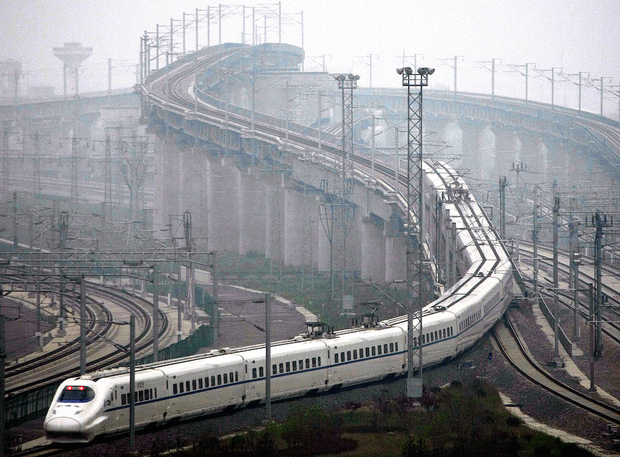Disputes between the two agencies running the trains in China over how to classify and publish details on fatal railroad incidents has kept reports on some fatal accidents last year from surfacing, people close to the matter say.
Several employees of China Railway Corp. (CRC), which builds the country’s railroad networks and manages their commercial operations, said they have received reports about several serious accidents that involved three to 10 deaths last year.
None of the reports have been made public, which would contradict new rules from the National Railway Administration, the agency established in 2013 to handle the non-commercial affairs of the country’s railroad network after the Ministry of Railways was dissolved.
The sources Caixin spoke to did not say how many accidents occurred or how many people died in total.
The railroad administration announced rules in May that said that all companies in the industry must tell it about accidents that caused three deaths or more. Information including investigation results and who was punished and how, should be contained in the report and published on the administration’s website within 20 working days after the report was filed, the rules say. As of January 11, no reports on fatal accidents have appeared on the website’s page.
An official from the Ministry of Transport, which supervises the railroad administration, said the CRC opposed the disclosure rules and has argued for a “more cautious” approach to publishing the information.
He said employees of the ministry and the railroad administration found people at the CRC’s 18 regional bureaus were reluctant to cooperate with them on accident probes and on publishing investigation results.
A source close to the ministry said the administration’s rules were rushed out before all parties concerned agreed on key provisions. Negotiations on new rules seem to have stalled over sharp divisions regarding how to investigate and classify fatal accidents, and when and how to release information to the public, he said.
The CRC has not replied to Caixin’s request for comment.
Opening Slowly
Fatality rates in the railroad industry have traditionally been among China’s most closely guarded secrets. The State Administration of Work Safety has a database for accidents that includes data on deaths and injuries in almost all major industries and most of the information is published on its website.
However, the railroad sector is not included in the database, a source close to the safety watchdog said. Before the CRC was created, the old railroad ministry handled nearly every aspect of accidents, especially when the dead or injured worked for a state-owned company in the railroad industry or had relatives who did, experts who follow reform of the railroad industry say.
The ministry managed to keep information about most accidents in-house because it owned hospitals that treated the injured and the companies that could be ordered to compensate victims, the experts said. It also controlled a network of courts and law enforcement that was funded by and answered to local railroad bureaus. This system was intact until 2012.
The ministry started publishing some data in 2007 on accidents that killed people outside the railroad system. The data show that from 2007 to 2012, the number of deaths involving people outside the industry steadily fell every year. Even in 2011, when a collision of two bullet trains in the eastern city of Wenzhou killed 40 passengers, the annual death toll was still 5.4 percent lower than the previous year, the data show. The ministry has never published the total number of people who died in mishaps every year.
In 2014, the CRC published a death toll for the first time. It said that 1,336 people died in railroad accidents in 2013, down 5.7 percent from a year earlier. It said last year the death toll in 2014 was 1,232.
Xie Feng, China’s ambassador to Indonesia, said in August the casualty rate in the railroad industry over the past decade was 0.02 per 1 billion passengers per kilometer, among the lowest of all nations. China is trying to convince Indonesia and many other countries to let it build their railroad networks.
Yet information regarding specific accidents remain out of reach. Caixin has recently reported on two accidents, one in 2013 that left four people dead and the other in 2014 that killed three, but details on either crash remain unavailable.




